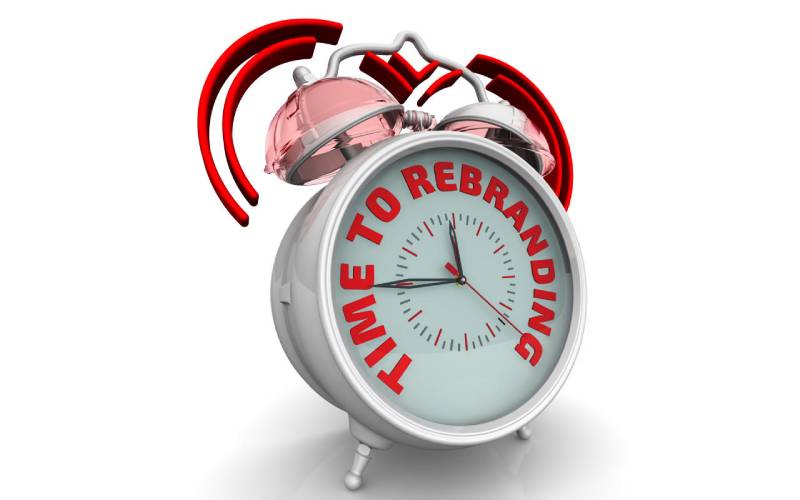
When Greek philosopher Heraclitus of Ephesus said the only constant in life is change, he also asserted that resisting change is what makes humans suffer in life.
While the maxim still holds true today, a pertinent question has always been: is all change necessary?
In a marketing sense, though change is how a brand remains relevant in the market, sometimes it could backfire.
The manufacturers of popular milking jelly Arimis learnt this the hard way when one visual designer going by the Twitter handle @thetriggahappy1 posted a proposed modern look of the packaging of the product on October 23 this year.
Netizens did not hide their “disgust” at the mere thought that the manufacturers of the jelly, whose use has moved past milking into a preferred beauty product especially among urban women, could assume a different look from the one they grew up with.
The backlash forced Arimis to release a statement four days later to calm the nation down.
“We stick to our initial brand!” said the firm in a statement downplaying any plans of a rebrand.
Sifting through the comments of those opposed to the proposed rebranding, it was clear why many Kenyans love the milking jelly, its packaging aside.
“By the way, this petroleum jelly (for cows) works magic on chaffed dry knuckles, elbows and dry-skin legs, leaving the skin silky smooth and shiny,” said one Facebook user.
But when does a manufacturer know a product or service is ripe for rebranding and if it is, how should one go about it?
And what happens when the market refuses any attempt to rebrand a service or product?
Alex Muiruri, regional managing director of marketing firm Denstu Location Services, says customer feedback is key in determining whether a product needs revamping as was the case with Arimis.
“What I would say is that you need to find a balance because Arimis has its cultural heritage, which is in the name. The name is what is very important,” he says.
“The look and feel can always be adjusted to fit the lifestyle of the new consumers.”
Stay informed. Subscribe to our newsletter
Mr Muiruri says the tendency by marketers and manufacturers to hold onto their core consumers can limit the potential of the brand to grow.
The question then is, how do you appeal to new customers while retaining old ones?
Muiruri says consumers who are aesthetically attracted to a product may not want a bulky product in their purse, so they will seek more appealing alternatives.
“In other words, people are not saying change Arimis. They are asking you to adapt to change from an aesthetic point of view,” he says.
Joanne Mwangi, chief executive of communication agency PMS Group, says rebranding can sometimes cause confusion.
She says if marketers feel the need to rebrand their products, they must keep everyone aware of what is going on.
“Communication is absolutely crucial during a rebranding project,” says Ms Mwangi. If there is no proper rebranding strategy, she says, you risk losing some of your existing customers.
“Unfortunately, even if you do everything right, there is still a possibility that you will lose customers. Why? People do not like change,” she says.
Mwangi says by explaining reasons for rebranding clearly and remaining true to your values and being conscious of your consumer needs, you can minimise the risk of losing long-term customers.
So how does one build a loyal customer base that will stick by the brand even after rebranding?
This only happens when a product is tried, tested and proven, Mwangi says.
“Find a product that would meet the customer’s need and see how well it would stand out from the competition.”
[email protected]
 The Standard Group Plc is a
multi-media organization with investments in media platforms spanning newspaper
print operations, television, radio broadcasting, digital and online services. The
Standard Group is recognized as a leading multi-media house in Kenya with a key
influence in matters of national and international interest.
The Standard Group Plc is a
multi-media organization with investments in media platforms spanning newspaper
print operations, television, radio broadcasting, digital and online services. The
Standard Group is recognized as a leading multi-media house in Kenya with a key
influence in matters of national and international interest.
 The Standard Group Plc is a
multi-media organization with investments in media platforms spanning newspaper
print operations, television, radio broadcasting, digital and online services. The
Standard Group is recognized as a leading multi-media house in Kenya with a key
influence in matters of national and international interest.
The Standard Group Plc is a
multi-media organization with investments in media platforms spanning newspaper
print operations, television, radio broadcasting, digital and online services. The
Standard Group is recognized as a leading multi-media house in Kenya with a key
influence in matters of national and international interest.









